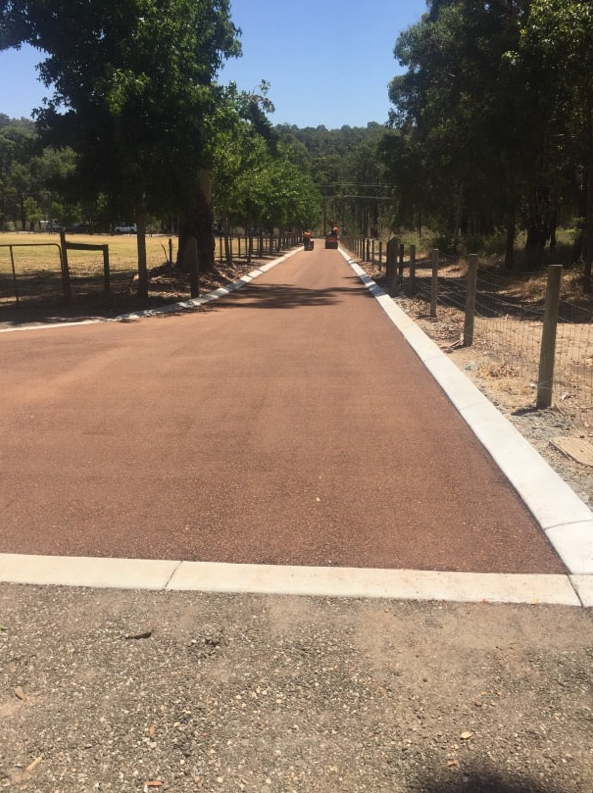Potholes are more than just a nuisance—they’re a persistent and costly issue for drivers, councils, and road maintenance contractors alike. In areas like Hurstbridge, VIC, where weather conditions can be unpredictable and road traffic varies from light vehicles to heavy machinery, potholes can form rapidly and worsen even faster if not addressed.
At Hurstbridge Road Tech, we’ve seen firsthand how potholes develop and how proper surfacing techniques can help prevent them. In this article, we take a closer look at what really causes potholes, how they affect asphalt and bitumen roads, and what can be done to reduce their occurrence.
What Is a Pothole?
A pothole is a depression or hollow in a road surface caused by the weakening and eventual failure of the pavement. While they may start small, potholes can expand quickly—posing safety hazards, damaging vehicles, and shortening the lifespan of the road.
Understanding how they form is the first step in prevention.
The Main Causes of Potholes
1. Water Infiltration
Water is the leading cause of pothole formation. When rainwater or runoff seeps through cracks in the asphalt surface, it reaches the underlying base material. Over time, this weakens the base, particularly if drainage is poor or the surface has not been properly sealed.
During colder months or cool overnight temperatures, trapped water can freeze and expand, creating pressure beneath the surface. As it thaws, the surface weakens further and eventually collapses under traffic.
2. Traffic Load Stress
Frequent or heavy traffic—especially from trucks, buses, or machinery—places continual stress on asphalt surfaces. If the pavement was not designed for high-load capacity or has already weakened due to age or water damage, this stress accelerates the breakdown of the surface.
- Repeated vehicle pressure forces the asphalt to flex and crack
- Weakened areas become brittle and prone to breaking
- Once a void forms, it grows quickly under further use
3. Poor Sub-Base or Base Preparation
Even the best surface materials won’t last if the foundation beneath is unstable. A poorly compacted sub-base or insufficient support can lead to uneven settling, which causes the asphalt above to crack and degrade.
- Base erosion leads to surface instability
- Inadequate compaction allows movement and sinking
- Sub-surface voids develop into visible potholes
4. Aged or Brittle Asphalt
Over time, asphalt oxidises due to exposure to air, sunlight, and moisture. This causes the bitumen binder to harden and become less flexible, making it more susceptible to cracking and splitting under pressure.
Older surfaces that haven’t been maintained or resealed are more likely to crack—and those cracks are the entry points for water and debris that eventually lead to potholes.
5. Lack of Preventative Maintenance
Small surface issues such as minor cracks or ravelled sections may not seem urgent, but they often signal the start of more significant problems. Without timely maintenance, these imperfections allow water to infiltrate, ultimately triggering pothole formation.
Regular inspections and minor repairs can prevent larger failures later.
How to Prevent Potholes from Forming
At Hurstbridge Road Tech, we use a combination of preventative techniques and proactive maintenance strategies to reduce the risk of pothole development in Hurstbridge and surrounding areas.
Key preventative measures include:
- Proper surface grading and drainage – Ensures water is directed away from the pavement
- Crack sealing and resealing – Prevents moisture from penetrating the surface
- Regular inspections – Identifies surface fatigue before failure occurs
- Quality sub-base preparation – Creates a strong foundation to support surface loads
- Use of appropriate materials – Tailored to site conditions and traffic expectations
By taking action early, property owners and councils can significantly extend the life of their asphalt surfaces and reduce long-term repair costs.
When to Consider Professional Pothole Repairs
If your road, driveway, or car park is already showing signs of potholes, it’s important to act quickly before the damage spreads. Professional pothole repairs involve:
- Cleaning and preparing the damaged area
- Applying new asphalt or patching compound
- Compacting the patch for long-term durability
- Sealing the repair to prevent future water ingress
Prompt, professional attention prevents the need for more costly resurfacing or full reconstruction later on.
Conclusion
Potholes are a symptom of deeper pavement issues, typically caused by water infiltration, base failure, and surface neglect. In Hurstbridge, VIC, where climate and usage can vary widely, proactive management is essential to keeping asphalt surfaces safe, smooth, and long-lasting.
At Hurstbridge Road Tech, we provide expert pothole repair, resurfacing, and preventative maintenance services tailored to your site’s specific needs. If you’ve noticed cracks, sinking, or potholes forming on your asphalt surface, contact our team today for a professional assessment and tailored solution. Let us help you stay one step ahead of road damage.
Call us on: 03 9068 7895
Click here to find out more about Hurstbridge Road Tech
Click here to complete our contact form and see how we can help with your driveways.

